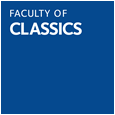Nature may well abhor a vacuum, but Classicists could definitely give her a run for her money, especially those of us who deal with the literary history of the Ar-chaic period. Scholars in this area are used to patchy evidence, unclear lines of influence and development, and a persistent darkness surrounding the genesis, earliest transmission and reception of our texts. Readers unfortunate enough to be familiar with my previous work will recall a certain kind of intellectual fallacy to which, I have suggested, Classicists are especially susceptible — WYSIATI, or what you see is all there is.2 That is, scholars are prone to filling the gaps in our evidence by pretending that there aren’t any, as though the extant literature from this period amounts to all that we need to know, or all that is worth knowing. In practical terms, this leads them to construct the literary history of the Archaic period around the central pillars of the Homeric poems, and then to link those texts with every other, in a story of development and literary influence familiar from later stages of antiquity. In sum, we are told that we should use the same strategies of the Augustan poets in Rome as the model to understand the visible beginnings of Greek literature.3



